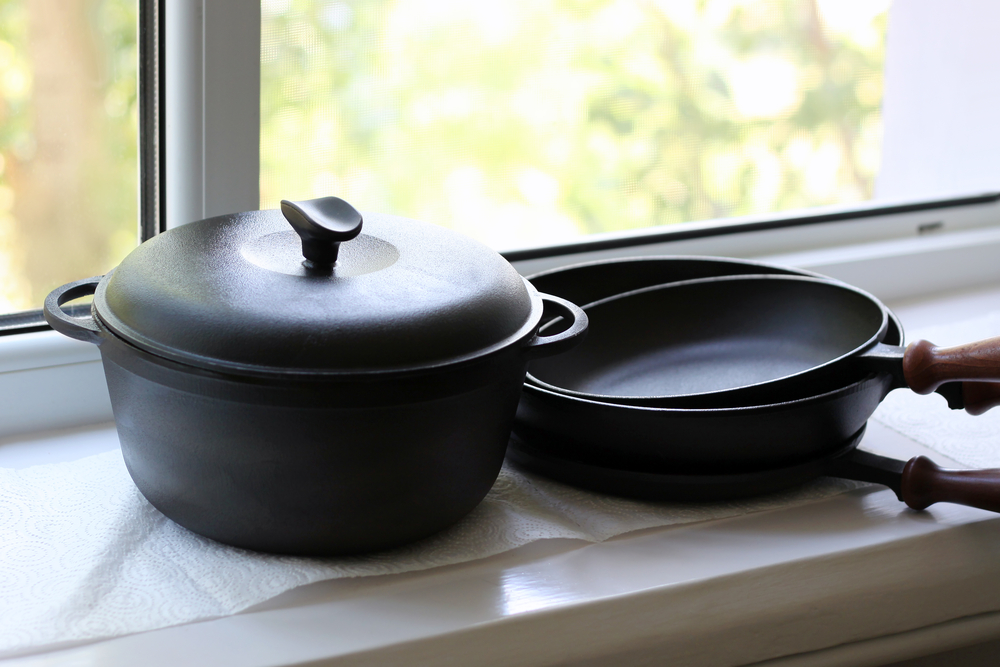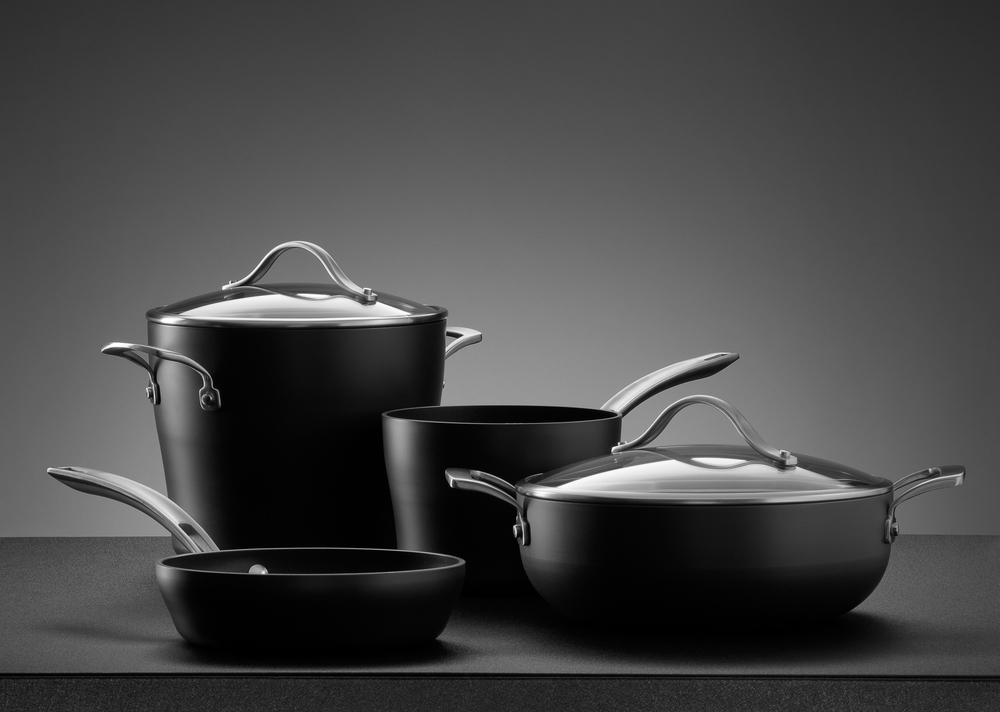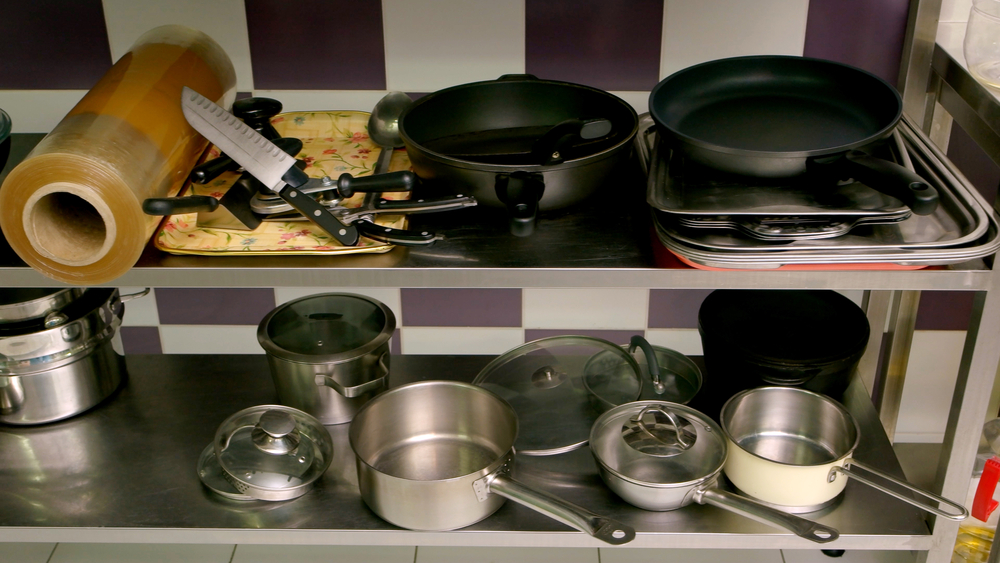Cleaning hard anodized cookware can be a daunting task, especially if you’re not sure where to start. But don’t worry, with a little bit of knowledge and the right tools, you can keep your cookware looking like new for years to come.
Hard anodized cookware is made from aluminum that has been treated with an electrochemical process to harden the surface, making it durable and scratch-resistant.
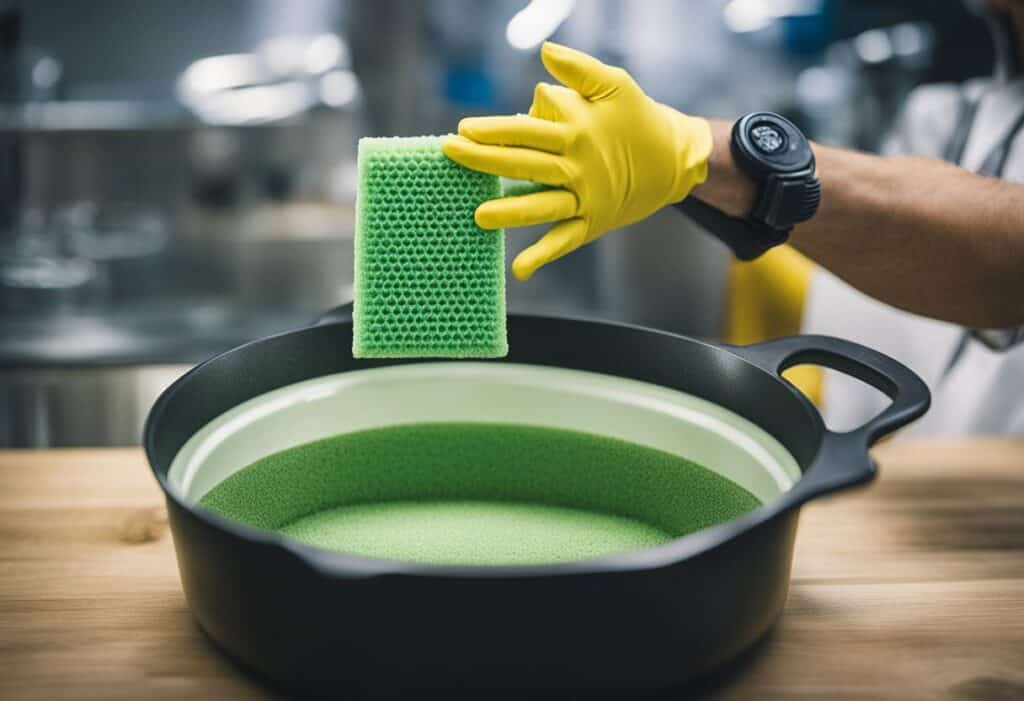
To keep your hard anodized cookware in top condition, it’s important to understand the basics of cleaning it. The process is relatively simple, but there are a few things to keep in mind to avoid damaging the surface.
For example, you should avoid using abrasive cleaners or scrubbers that can scratch the surface, and you should never put your hard anodized cookware in the dishwasher.
Overall, cleaning hard anodized cookware is a straightforward process that requires a little bit of care and attention. With the right techniques and tools, you can keep your cookware looking and performing like new for years to come.
In the following sections, I’ll cover everything you need to know about cleaning hard anodized cookware, including deep cleaning techniques, how to avoid damaging your cookware, and special care instructions for different brands.
Key Takeaways
- Cleaning hard anodized cookware requires a gentle touch and the right tools to avoid damaging the surface.
- Avoid using abrasive cleaners or scrubbers, and never put your hard anodized cookware in the dishwasher.
- With the right knowledge and techniques, you can keep your hard anodized cookware looking and performing like new for years to come.
Understanding Hard Anodized Cookware
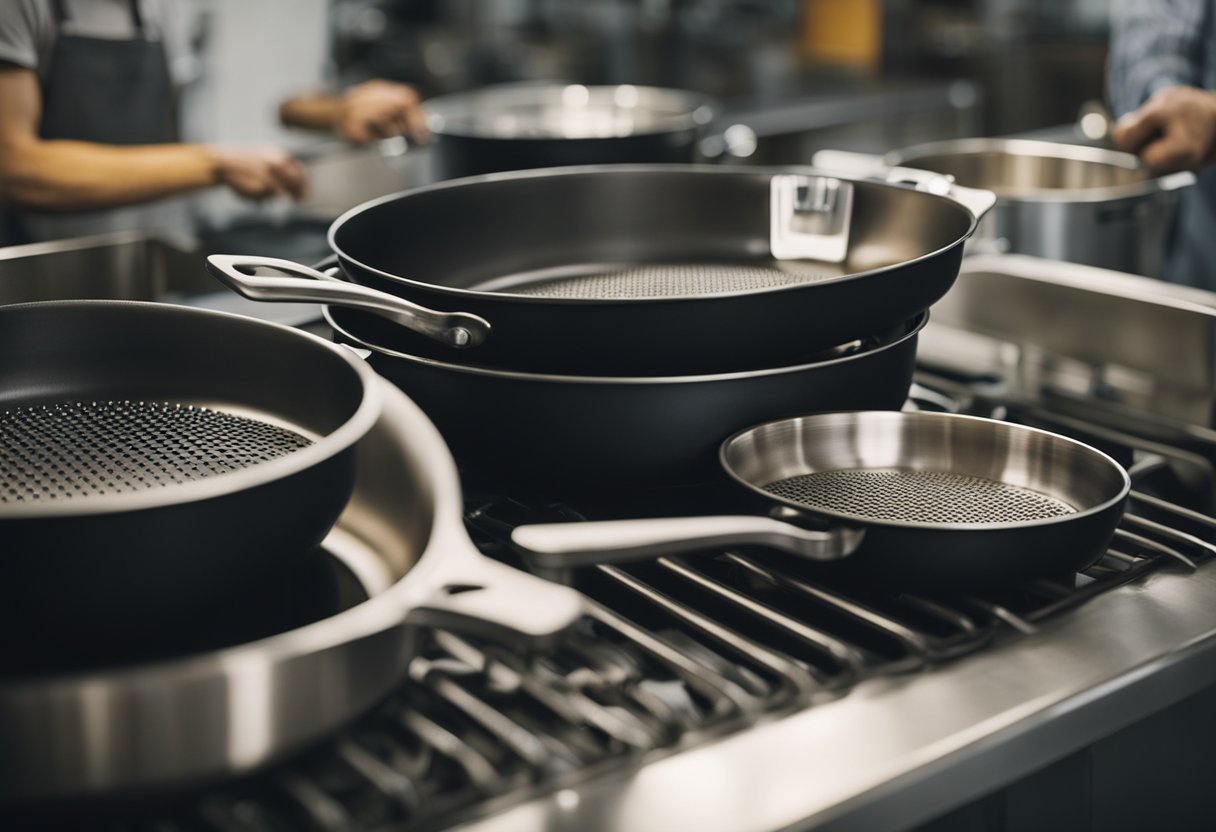
I have been using hard anodized cookware for a long time, and I can tell you that it is one of the most durable and long-lasting types of cookware available in the market. Hard anodized cookware is made of aluminum metal that has been hardened through an electrochemical process.
The process involves immersing the aluminum in an acid bath and passing an electric current through it. This process creates a layer of oxide on the surface of the aluminum, making it harder and more durable than regular aluminum.
One of the significant advantages of hard anodized cookware is its non-stick surface. The oxide layer created during the electrochemical process makes the surface of the aluminum non-reactive, scratch-resistant, and non-stick.
This makes it easy to cook food without worrying about it sticking to the surface of the pan or pot.
Another advantage of hard anodized cookware is its even heat distribution. The aluminum core of the cookware heats up quickly and distributes the heat evenly throughout the pan or pot.
This ensures that your food is cooked evenly and prevents hot spots that can burn your food.
Hard anodized cookware is also easy to clean and maintain. You can use a mild dish soap and warm water to clean it.
Avoid using harsh abrasives or steel wool as they can scratch the surface of the cookware. If you have burnt-on food, you can use a mixture of vinegar and water to loosen it up and then clean it with soap and water.
In conclusion, hard anodized cookware is an excellent investment for anyone who loves to cook. It is durable, non-stick, and easy to clean, making it a popular choice for both home cooks and professional chefs.
The Basics of Cleaning Hard Anodized Cookware
Cleaning hard anodized cookware is a straightforward process that requires a bit of care and attention.
Here are some basic steps to follow when cleaning your hard anodized cookware:
- Rinse your cookware with warm water to remove any loose particles or debris. This helps to prevent scratching or damaging the surface of the cookware.
- Use a mild dish soap to help break down any grease or oils. Calphalon specifies the detergent brand “Dawn” as being one of the best for hard-anodized cookware. Apply a small amount of dish soap to a soft sponge or non-abrasive sponge.
- Gently scrub the surface of the cookware with the sponge, paying particular attention to any areas with stubborn stains or burnt-on food. Avoid using abrasive sponges or steel wool, as these can scratch the surface of the cookware.
- Rinse the cookware thoroughly with warm water to remove any soap residue. Be sure to rinse both the inside and outside of the cookware.
- Dry the cookware thoroughly with a soft, clean towel. Avoid using abrasive or rough towels, as these can scratch the surface of the cookware.
- For regular cleaning, repeat this process after each use. This helps to prevent the buildup of grease and food particles, which can be difficult to remove if left for too long.
Overall, cleaning hard anodized cookware is a simple process that requires a bit of care and attention. By following these basic steps, you can keep your cookware looking like new for years to come.
Deep Cleaning Techniques
When it comes to deep cleaning hard anodized cookware, there are a few techniques that can help remove stubborn stains and burnt-on food residue. Here are some effective methods:
Baking Soda Paste
Baking soda is a non-toxic and eco-friendly alternative to harsh chemicals and is great for deep cleaning and removing tough stains.
To make a baking soda paste, mix two parts baking soda with one part water. Apply the paste to the affected area and let it sit for 30 minutes. Then, scrub with a soft-bristled brush and rinse with warm water.
Vinegar Soak
Vinegar is acidic and great at breaking down stains, food particles, and burnt residue. To use vinegar for cleaning hard anodized cookware, fill up a sink using the ratio of one cup of vinegar to three cups of water.
Fully submerge the pan and let it soak for 15 minutes. The food particles will dislodge, and you can scrub them away with a soft-bristled brush.
Salt and Lemon
A mixture of salt and lemon juice can also be effective at removing tough stains and burnt-on food residue.
To make the mixture, sprinkle salt over the affected area and squeeze lemon juice over it. Let it sit for 30 minutes, then scrub with a soft-bristled brush and rinse with warm water.
Cleaning Brush
A soft-bristled brush can be used to scrub away food residue and stains without damaging the surface of the cookware. Make sure to use a cleaning brush that is specifically designed for non-stick surfaces to avoid scratching the hard anodized coating.
Overall, deep cleaning hard anodized cookware requires a bit of effort, but with the right techniques and tools, you can keep your cookware looking like new for years to come.
Avoiding Damage to Your Cookware
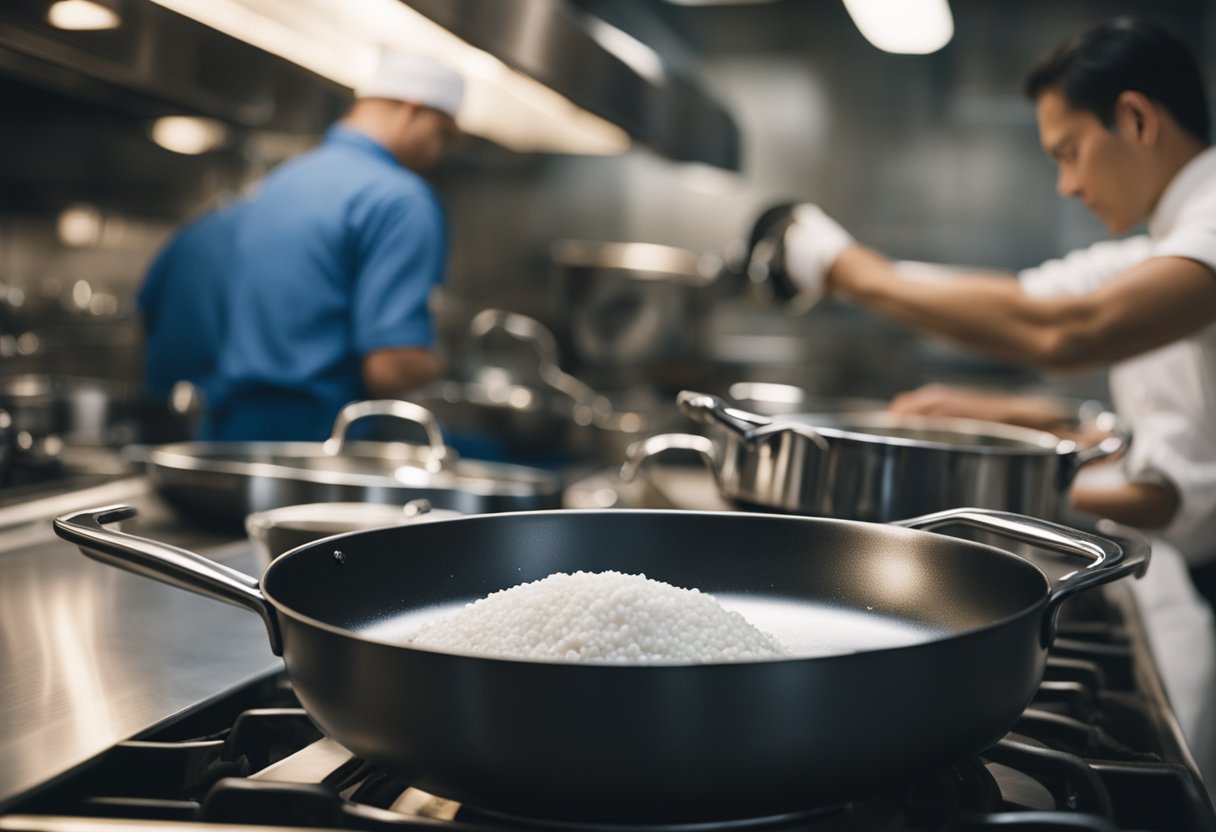
As someone who has used hard anodized cookware for years, I can confidently say that proper care is essential to keep it looking and functioning like new. Here are some tips to avoid damaging your cookware:
Use the Right Utensils
One of the most common ways to damage hard anodized cookware is by using metal utensils. While some manufacturers claim that their cookware is safe for metal utensils, it is always best to err on the side of caution and use wooden or silicone utensils instead.
Metal utensils can scratch the non-stick surface of the cookware, which can lead to food sticking and discoloration.
Avoid High Heat
While hard anodized cookware is designed to withstand high temperatures, it is still important to avoid overheating the cookware.
High heat can cause warping, which can affect the performance of the cookware. It is also important to avoid using high heat when cooking with non-stick cookware, as this can damage the non-stick coating.
Be Careful When Cleaning
When it comes to cleaning hard anodized cookware, it is important to avoid using harsh chemicals or abrasive scrubbing pads. Instead, use a soft sponge or cloth and a mild detergent. Avoid using alkaline-based detergents, as these can damage the non-stick coating.
Store Properly
Storing your cookware properly is also important to avoid damage. Avoid stacking your cookware, as this can cause scratches and other damage. Instead, store your cookware in a way that allows each piece to be easily accessible and protected from scratches and other damage.
By following these tips, you can help ensure that your hard anodized cookware stays in great condition for years to come.
Special Care for Different Brands
When it comes to cleaning hard anodized cookware, different brands may require different care.
Here are some tips for cleaning popular brands of hard anodized cookware:
Calphalon Cookware
Calphalon cookware is known for its durability and non-stick surface. To keep your Calphalon cookware in top condition, it’s important to avoid using abrasive cleaners or scrubbers. Instead, use a soft sponge or cloth and mild dish soap to clean the surface.
For tougher stains, you can use a non-abrasive cleaner like Calphalon Dormond. Simply apply the cleaner to the surface of the cookware and let it sit for 15-30 minutes before wiping it away with a soft cloth.
Anolon Cookware
Anolon cookware is also known for its durability and non-stick surface. To keep your Anolon cookware in top condition, it’s important to avoid using metal utensils, which can scratch the surface. Instead, use silicone or wooden utensils.
To clean the surface, use a soft sponge or cloth and mild dish soap. For tougher stains, you can use a non-abrasive cleaner like baking soda. Simply mix baking soda and water to form a paste, apply it to the surface of the cookware, and let it sit for 15-30 minutes before wiping it away with a soft cloth.
Other Brands
If you have hard anodized cookware from a brand other than Calphalon or Anolon, it’s important to follow the manufacturer’s instructions for cleaning and care. In general, it’s best to avoid using abrasive cleaners or scrubbers, which can scratch the surface.
Instead, use a soft sponge or cloth and mild dish soap to clean the surface. For tougher stains, you can use a non-abrasive cleaner recommended by the manufacturer.
Maintaining the Longevity of Your Cookware
As someone who has been using hard anodized cookware for years, I know that proper maintenance is key to ensuring its longevity.
Here are some tips that I have found to be helpful in keeping my cookware in top shape:
Seasoning Your Cookware
While hard anodized cookware does not require seasoning like cast iron, some people prefer to do so for personal preference. If you choose to season your cookware, make sure to do it correctly.
The process of oxidation has already sealed the surface of these hard anodized items, but seasoning pans is a matter of personal preference. To season hard anodized aluminum, follow these steps:
- Wash your cookware with warm, soapy water and dry it thoroughly.
- Rub a small amount of vegetable oil or shortening onto the surface of the cookware.
- Place the cookware in a preheated oven at 350°F for one hour.
- Let the cookware cool in the oven before removing it.
Cleaning Your Cookware
To clean hard anodized cookware, mix warm water with dish soap, use a soft sponge, and avoid abrasive materials. Hard anodized cookware is a popular choice for its durability, non-stick surface, and even heat distribution.
However, it requires proper care to maintain its quality and longevity. Here are some additional tips for cleaning your cookware:
- Rinse your cookware with warm water to remove any loose particles.
- Use a mild dishwashing detergent to help break down any grease or oils.
- Calphalon specifies the detergent brand “Dawn” as being one of the best for hard-anodized cookware.
- Use a soft-bristled brush or sponge to clean your pan with the help of the soapy, hot water.
- Avoid using abrasive materials, such as steel wool or scouring pads, which can scratch the surface of your cookware.
Maintaining the Appearance of Your Cookware
To keep your hard anodized cookware looking its best, avoid using metal utensils, which can scratch the non-stick coating. Instead, use wooden or silicone utensils that are gentle on the surface.
Also, avoid stacking your cookware, as this can cause scratches and other damage. Instead, store your cookware separately, using pot protectors if necessary.
Warranty and Cost
Most hard anodized cookware comes with a warranty, which can vary in length and coverage. Be sure to read the warranty carefully and follow the manufacturer’s instructions for care and use.
While hard anodized cookware can be more expensive than other types of cookware, its durability and long lifespan make it a worthwhile investment for any home cook.
By following these tips, you can maintain the longevity of your hard anodized cookware and ensure that it continues to perform well for years to come.
What to Do with Stubborn Stains or Burns
Cleaning hard anodized cookware can be a challenge, especially when dealing with stubborn stains or burns. Fortunately, there are several effective methods you can use to get your cookware looking like new again.
One of the most popular methods for removing stubborn stains and burns from hard anodized cookware is to use a scouring agent.
Bar Keeper’s Friend is a popular brand that many people swear by. Simply apply a small amount of the powder to a damp sponge or cloth and gently scrub the affected areas. Rinse thoroughly and dry.
Another option is to use cream of tartar. Mix a small amount of the powder with water to create a paste, then apply it to the stains or burns. Let it sit for a few minutes, then scrub with a non-abrasive sponge or cloth. Rinse thoroughly and dry.
If the stains or burns are particularly stubborn, you can try using an oven cleaner. Be sure to follow the manufacturer’s instructions carefully and wear gloves and eye protection.
Apply the cleaner to the affected areas and let it sit for the recommended amount of time. Scrub with a non-abrasive sponge or cloth, then rinse thoroughly and dry.
Ajax and Comet are two other popular scouring powders that can be effective at removing stains and burns from hard anodized cookware. Again, be sure to use a non-abrasive sponge or cloth and rinse thoroughly after scrubbing.
It’s important to note that while these methods can be effective, they can also be harsh on your cookware.
Always follow the manufacturer’s instructions and test any new cleaning method on a small, inconspicuous area before using it on the entire pan. With a little patience and persistence, you can get your hard anodized cookware looking like new again.
Understanding the Pros and Cons of Hard Anodized Cookware
As someone who has used hard anodized cookware for years, I can confidently say that it has both pros and cons.
Here are some of the things you should keep in mind if you’re considering purchasing hard anodized cookware for your kitchen:
Pros
- Durable: Hard anodized cookware is made of aluminum that has been treated with anodizing, making it resistant to corrosion and warping. This means that your cookware will last longer, and you won’t have to worry about it becoming damaged or warped over time.
- Non-Toxic and Safe: Hard anodized cookware is non-toxic and safe for cooking. Unlike other types of cookware, it does not react with acidic or alkaline foods, so you can cook with peace of mind.
- Versatile: Hard anodized cookware can be used on all types of stovetops, including gas, electric, and induction. It can also be used in the oven and broiler, making it a versatile addition to any kitchen.
- Easy to Clean: Hard anodized cookware is easy to clean, thanks to its non-stick surface. Food doesn’t stick to the pan, making it simpler to clean. However, you should avoid using abrasive sponges and harsh chemicals, as they can damage the non-stick coating.
Cons
- Not Dishwasher-Safe: Due to its non-stick coating, hard-anodized aluminum cookware should only be hand-washed. The high temperature, harsh chemicals, and sharp utensils in the dishwasher could degrade the non-stick coating. When hand-washing this kind of cookware, never use abrasive sponges or harsh chemicals.
- Expensive: Hard anodized cookware is generally more expensive than other types of cookware, due to the anodizing process and the high-quality materials used. However, the durability and longevity of the cookware can make it a worthwhile investment in the long run.
- Prone to Scratches: While hard anodized cookware is durable, it is not scratch-proof. Scratches on the bottom or exterior of the cookware can lead to oxidation and rust, so it’s important to handle the cookware with care.
In conclusion, hard anodized cookware has its pros and cons, but it can be a great addition to any kitchen. Keep in mind the care instructions and the potential for scratches, and you’ll be able to enjoy your cookware for years to come.
Frequently Asked Questions
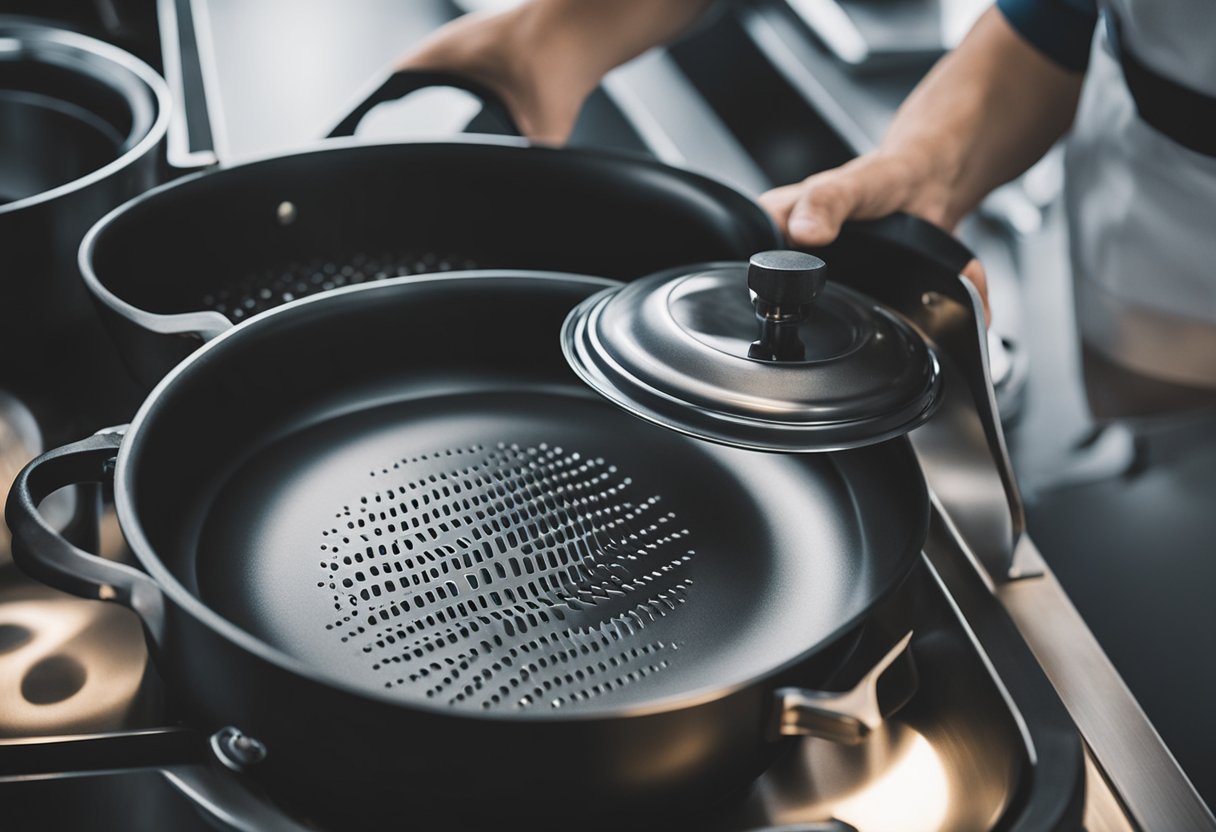
How do you clean Calphalon nonstick pans?
To clean Calphalon nonstick pans, you should avoid using abrasive cleaners or scrubbers that can scratch the surface. Instead, you can use a soft sponge or cloth with warm soapy water.
For tougher stains, you can try using a mixture of baking soda and water or white vinegar. Just be sure to rinse the pan thoroughly after cleaning.
How to clean Calphalon stainless steel pans?
To clean Calphalon stainless steel pans, you can use a mixture of warm water and dish soap. You can also use a non-abrasive cleaner or polish specifically designed for stainless steel.
Be sure to avoid using abrasive scrubbers or steel wool, as they can scratch the surface. Rinse the pan thoroughly after cleaning.
How to restore Calphalon pots and pans?
To restore Calphalon pots and pans, you can try using a mixture of baking soda and water or white vinegar to remove any stains or discoloration.
For tough stains, you can also try using a non-abrasive cleaner or polish specifically designed for the type of Calphalon cookware you have. Be sure to rinse the pan thoroughly after cleaning.
Can you use Bar Keepers Friend on hard anodized cookware?
Bar Keepers Friend is not recommended for use on hard anodized cookware, as it can scratch the surface.
Instead, you can use a soft sponge or cloth with warm soapy water to clean your hard anodized cookware. For tougher stains, you can try using a mixture of baking soda and water or white vinegar.
How do you clean all clad hard anodized cookware?
To clean All-Clad hard anodized cookware, you can use a soft sponge or cloth with warm soapy water. For tough stains, you can try using a mixture of baking soda and water or white vinegar.
Be sure to avoid using abrasive scrubbers or steel wool, as they can scratch the surface. Rinse the pan thoroughly after cleaning.
What is hard anodized cookware disadvantages?
One of the disadvantages of hard anodized cookware is that it can be more expensive than other types of cookware.
Additionally, hard anodized cookware can be more difficult to clean than other types of cookware, as it is prone to staining and discoloration. However, with proper care and cleaning, hard anodized cookware can last for many years.


